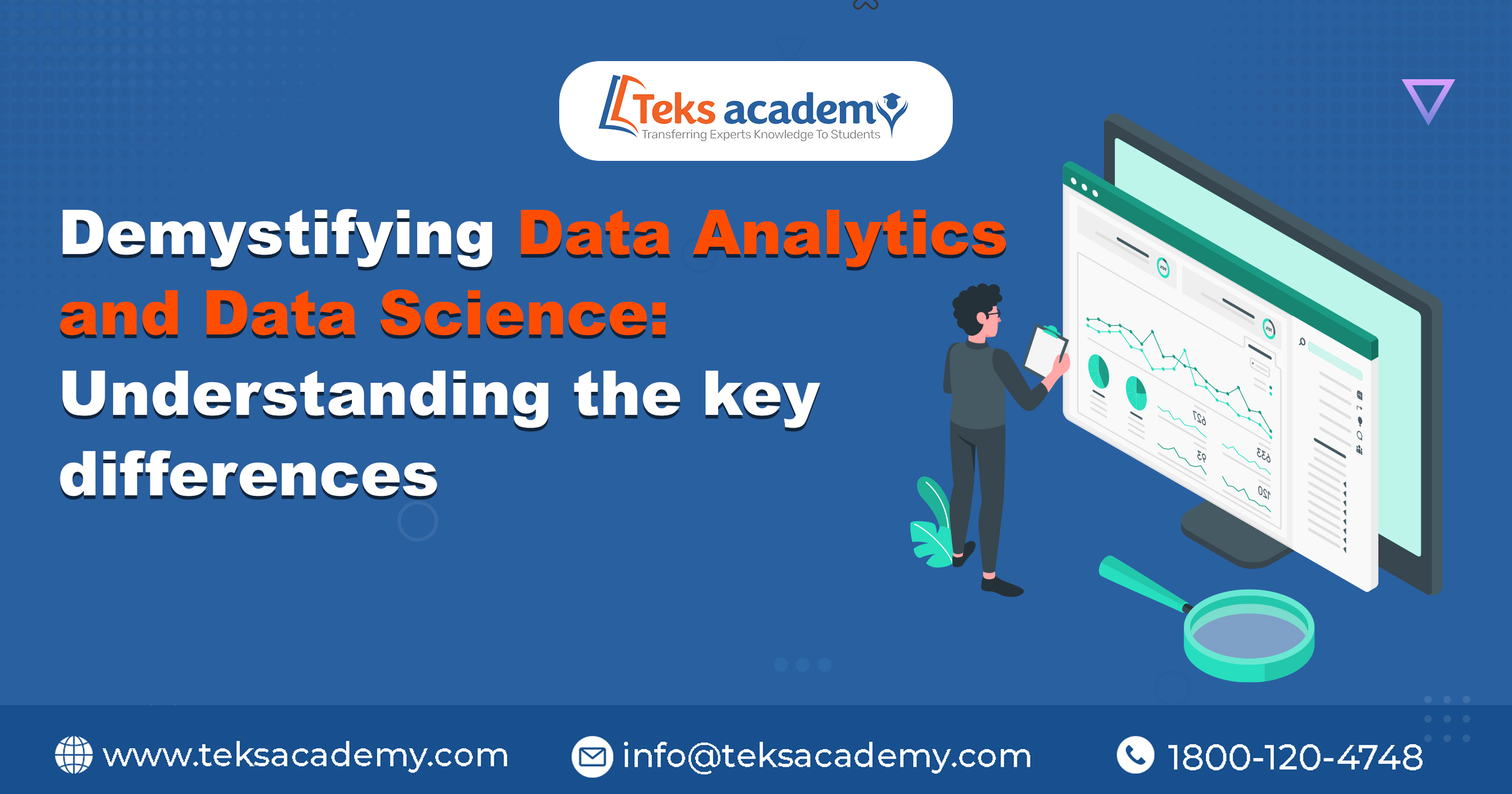

In today’s digitally driven world, data is more essential than ever for every industry. As students looking for a career in technology, business, or any other field where data plays a crucial role, understanding the fundamentals of data analytics and data science is more important. Data science and Data Analytics are used in making informed decisions in academics as well as in the professional journey. This blog will give you more clarity on the two different fields of Data Analytics and Data Science.
Data Science is an area that covers more information and data. It includes a wide range of methods and techniques for getting knowledge and ideas out of data. Data scientists use tools and methods like statistical analysis, machine learning, data mining, and intelligent systems to work with both organized and unstructured data. It is the study of how to predict future trends, make suggestions, and build predictive models to solve problems that are often hard to understand.
It is the process of inspecting, cleaning, transforming, and modeling data to find patterns, trends, and useful insights. Its main purpose is to answer specific questions, solve clear problems, and help people make decisions. Data analysts work with structured data and often use tools like SQL, Excel, Tableau, or Power BI to look at previous data and find trends or performance metrics.
Data science is a multidisciplinary field that forms the combination of statistics, computer science, and mathematics to extract valuable information and knowledge from the data. It involves a systematic approach to data collection, processing, analysis, and interpretation to solve more complex problems and make data-based decisions.
There are three pillars available in data science. They are listed as
Students pursuing data science start learning Python, R, and SQL, which are important for handling data efficiently. Additionally, developers use machine learning and artificial intelligence techniques to develop predictive models and create intelligent systems.
One of the fastest-evolving fields is data science, and various industries like finance, healthcare, marketing, and many others use it. If you are interested in data science as a student, getting into the lifelong learning mindset and staying updated with the latest industry updates are essential.
On the other hand, Data Analytics focuses on the inspection of data to extract meaningful patterns and insights that can guide important decisions. Unlike data science, data analytics deals with the analysis and interpretation of the available data.
Descriptive Analytics: This type of analysis deals with historical data and provides a summary of previous events. Descriptive analytics helps in understanding what has happened and allows businesses to assess performance and identify trends.
Advanced Data Analytics: This type of analytics includes both predictive and prescriptive analytics. Predictive analytics is the collection of historical data and statistical algorithms to make predictive decisions for the future. Where prescriptive analytics moves a step further and recommends which action should be taken based on the analysis.

They have different roles but are closely related to each other. Data science lays the foundation by preparing, cleaning, and transforming data. Data analytics analyze and derive the insights that are required to make important decisions.
On the other hand, data analytics focuses on the analysis and visualization of data, aiming to provide answers to specific business questions. Data science is broader in scope, encompassing the entire data pipeline, including data collection and cleaning, exploratory data analysis, and modeling.
Data Science always looks forward to the future. Its main goal is to predict what will happen in the future and figure out the underlying patterns and connections in the data. Data scientists use predictive and prescriptive analytics to predict trends, make recommendations, and improve processes. For example, they can predict customer losses, suggest personalized goods, and improve supply chain logistics using these methods.
It is like looking backward to gather data. It look at past data and answer questions like, “What was the sales quantity in the last quarter?”, “Which campaign worked better?” Data analysts use analytical methods that are descriptive and diagnostic to learn about what has happened in the past, find trends, and figure out what happened and why.
Data science takes on problems that are more complicated and unclear. The data can be unorganized, distracting, and huge, so it takes advanced techniques to pull out information that makes sense. Data scientists make and use predictive models, plan experiments, and make algorithms to find trends in data and predict what will happen in the future.
It focuses on problems and questions that are clear and easy to solve. Most of the time, the data structures itself and becomes available in clean and well-organized forms. We analyze data for insights, suggest actions based on past data, and implement them for improvement.
Data science enables predictive models and insights for competitive advantage through data-driven decision-making in companies. Successful data science projects can have a big effect on product suggestions, customer experiences, and business plans as a whole.
It creates reports, information management, and visualizations that show things have worked in the past in a clear and simple way. The results enable people to understand what happened in the past and what they need to do now to improve.
Data analytics and data science are two interconnected fields that have changed the way that businesses and analysts make decisions. As students gain a clear understanding of these two domains and their applications, they are prepared for exciting and rewarding careers in a world of data-driven insights that lead to more innovations and progress. By building strong foundations, knowing about the latest technologies, and staying curious and adaptable, you can embark on a successful journey in the ever-changing world of data analytics and data science.
